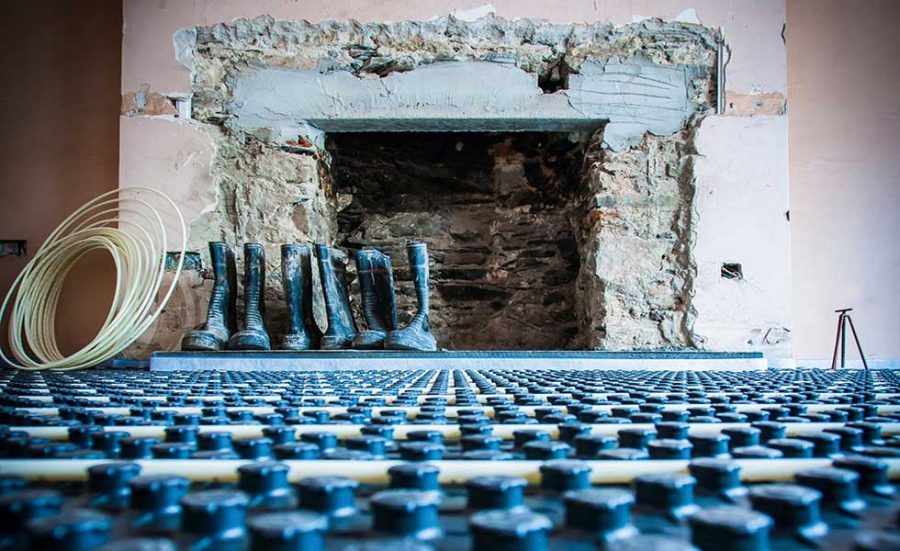If you are going for an underfloor heating system in your home, then you want to ensure you have a floor that enables the efficient transfer of heat.
Screed can do just that if you pick the right kind. You have two primary options- dry and self-seeking or liquid screed. They can create a surface for finished flooring to be laid on and transfer heat from the pipes and send it into the rooms above. The screed has an incredible thermal mass that enables the regulation of temperature and reduces your energy costs.
You want to have screed laid down fast to ensure that the pipes are not damaged. You should test the pressure on the system before doing this kind of work and make sure that the pressure is maintained while the screed is being installed.
Dry Screed
For this type of screed, rough sand and cement is mixed together, generally at about a ratio of four to one.
There is water involving in pouring this screed, though, despite the name. The mix should be wet enough that you can squeeze just a little water from a handful of it.
The screed needs to be mixed well and compacted to protect the pipes against damage. It isn’t always possible to get this mixture just right when mixing it by hand, which is why premade mixes are available.
There may be some fibres added to keep the screed from cracking or to give it additional strength. The screed mixture is poured one section at a time and then levelled off and finished with a few hand tools.
How long it takes the screed to cure will depend on temperature, humidity and thickness of the screed. In general, a dry screed floor takes about 28 days to dry enough for underfloor heating to be used.
The heat should be run on low initially, and that permits the screed to become warm at a measured pace. This ensures that it can fully cure before the temperature is brought up to normal heating levels.
Liquid (Self-Levelling) Screed
This kind of screed can level itself, and it spread out evenly for a proper finish. It is so simple to use, and going with this kind of screed can eliminate any unwanted voids or air gaps in the floor. If there are any air pockets, they can hurt the transfer of thermal energy. The liquid screed can be put down in a fairly thin layer with an underfloor heating system, much thinner than a traditional screed floor could be.
The liquid screed usually contains calcium sulphate, water, and a few chemicals. This lays fast and is ideal for larger areas, but it can take longer to cure than the dry screed would.
If you have floor insulation, you will need to put down a vapour barrier to ensure it is protected.
Overlays for Underfloor Heating
Overlays are available from a few different installers and they may save you some time. These are thin boards that are designed to work with heating pipes. They are placed over an insulated floor and then glued to one another to create a screed alternative.
If you floor is still in need of some levelling, though, then you may want to go with a think liquid screed layer. In some cases, you can top the overlay with a dry material from the installer.
For those who want to use an overlay, the heating pipes will react differently to various types of screed. The warm-up time may be less, but you may not get as much heat transfer into the room. You can get a complete guide on underfloor heating and details on the features and benefits of the installation on London Flow Screed.
